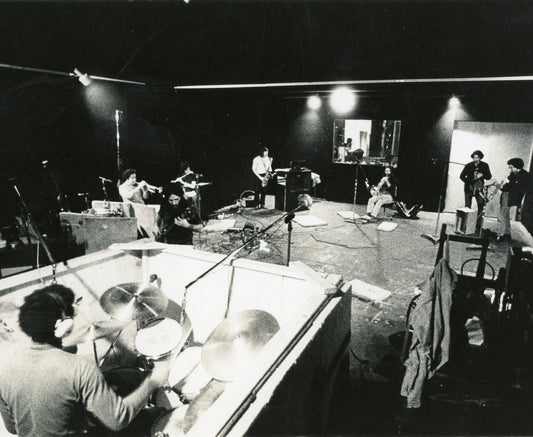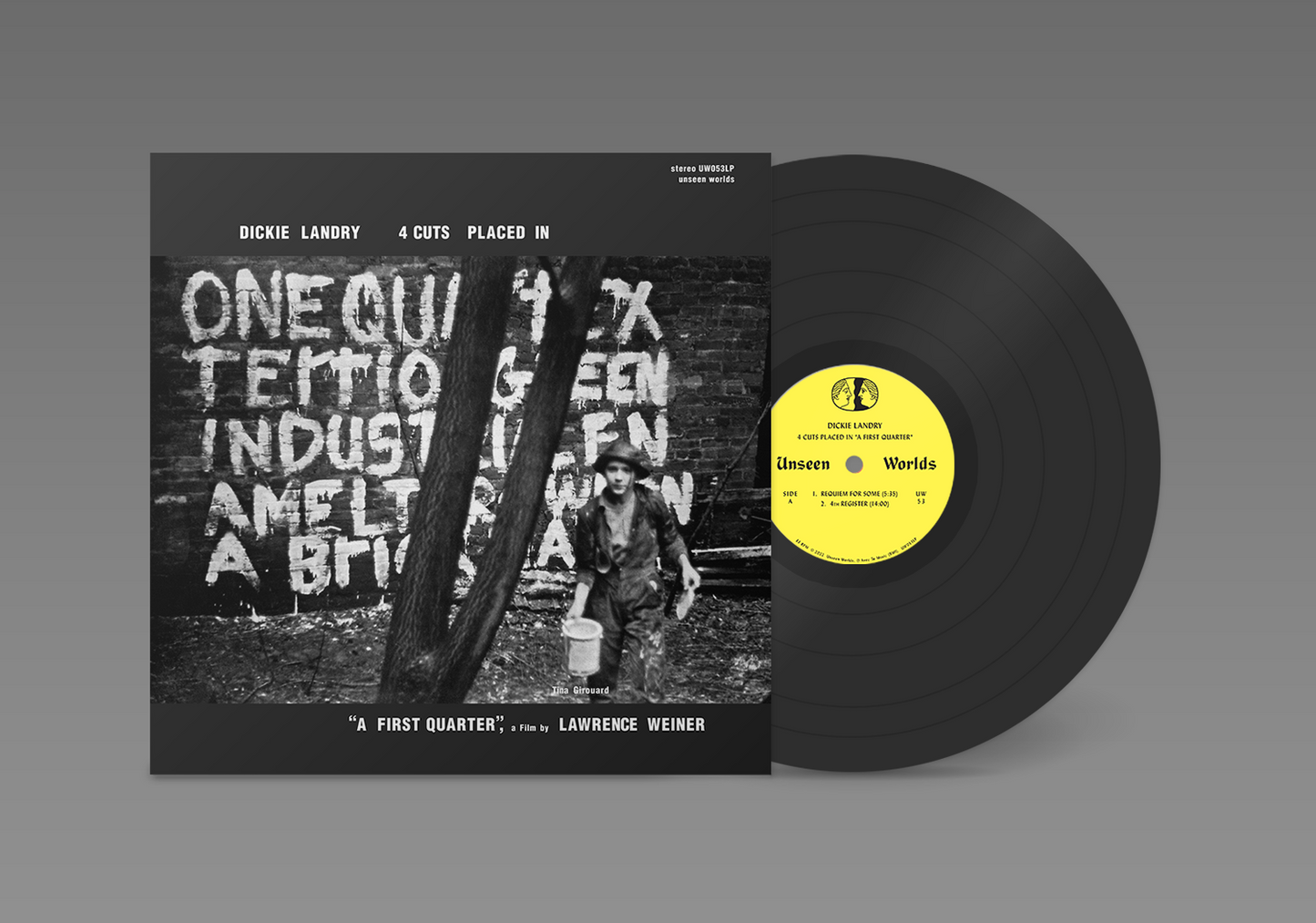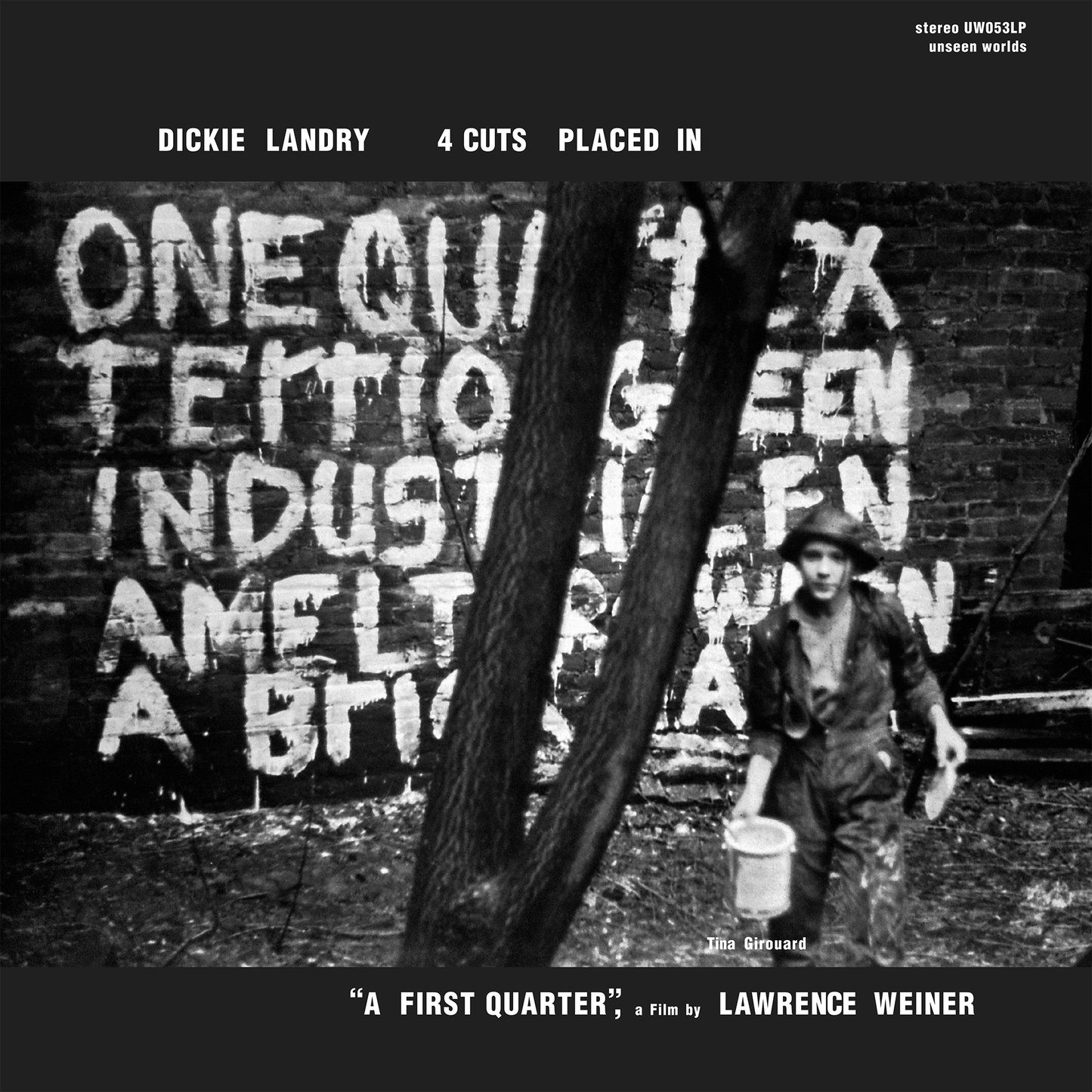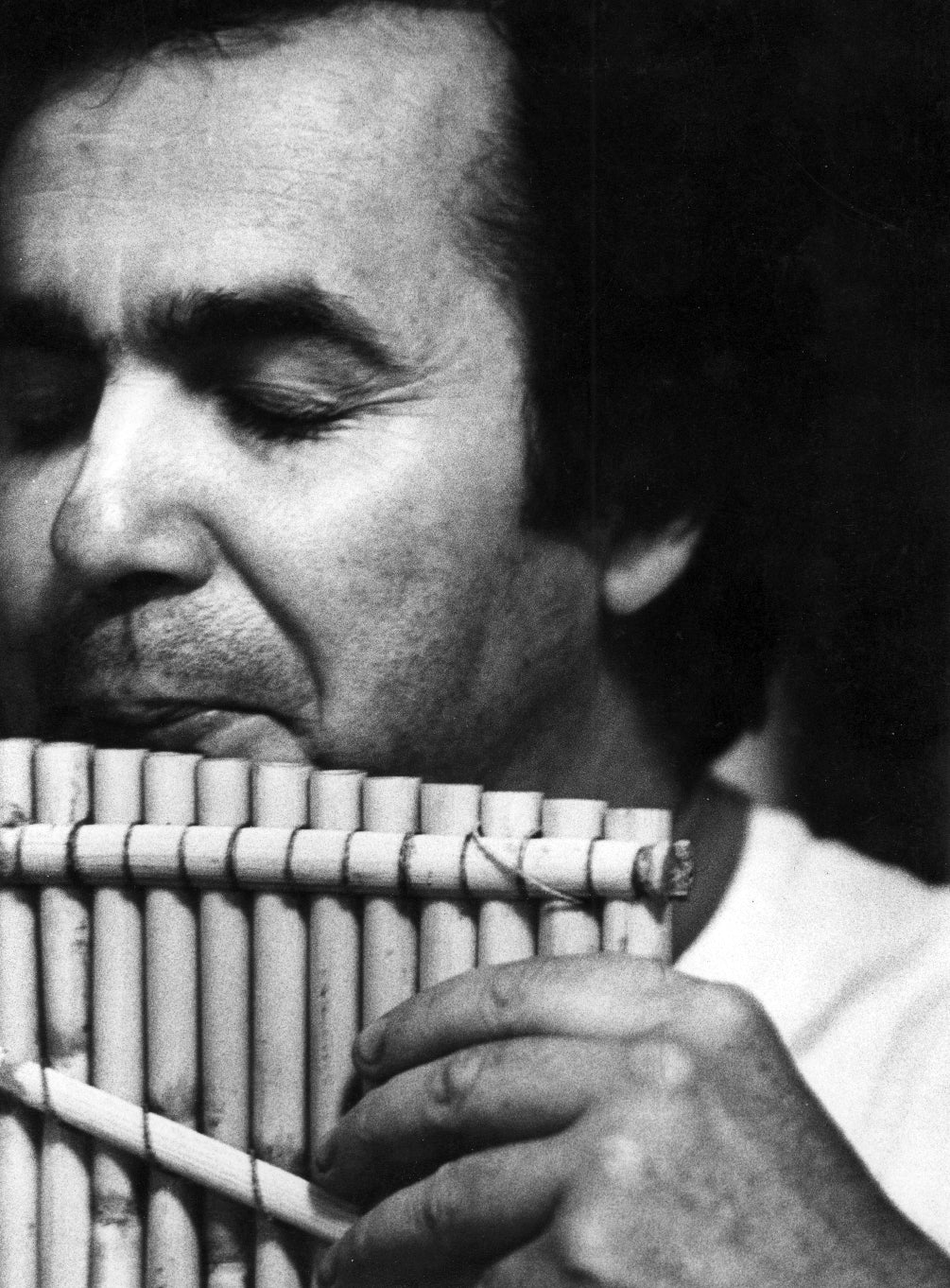
Dickie Landry, "4 Cuts from 'A First Quarter'”, Liner notes by Clifford Allen
At some point he was working on A First Quarter and wanted me to do the music. I said ‘I already have the music.’ He said ‘what do you mean?’...


4 Cuts Placed In "A First Quarter", the companion piece to Solos, is the sonic result of a collaboration with artist Lawrence Weiner. As Landry remembers, “I was working for Keith Sonnier at Castelli Gallery and met Lawrence. He asked ‘can you make a video for me?’ So we did "To and Fro..." At some point he was working on "A First Quarter" (1973) and wanted me to do the music. I said ‘I already have the music.’ He said ‘what do you mean?’ I had recorded several pieces with Kurt Munkcasi and walked around the set playing the music on a boom box.”
The set features one solo each by Landry and contrabassist Rusty Gilder, a duo for the tenor saxophones of Landry and Richard Peck, and an ensemble piece for Landry, Peck, Gilder, trumpeter Robert Prado, and drummer David Lee, Jr. Starting the record off is “Requiem for Some,” inspired by Gil Evans’ long, placid tones. The anchor is Lee’s dry cymbal attack and fancy footwork, dancing around overlapping and recombining horns, chords held just shy of splintering. “4th Register” is a grainy delayed solo tenor piece, presaging “Kitchen Solos” from Fifteen Saxophones by several years. “Piece for So” was, according to Landry, “a chance to give Rusty a solo”. Mostly known as an ensemble bassist, Gilder bounced between Lafayette, Charlotte, and New York, leaving a slim recorded legacy. Here, he stretches out for twelve minutes and change – with keen upper register detail and meaty up-tempo walk, he could have been mentioned in the same breath as players like Dave Holland and Barre Phillips. The closing “Duo Vivace” finds Landry and Peck sparring on tenors, the latter holding a melodic line while Landry leans into explosive glossolalia, until both become birds in flight.

Born in Cecilia, Louisiana in 1938, Richard “Dickie” Landry began his musical training at the age of six when he joined the St. Joseph Catholic Church Choir singing Gregorian Chant for six years seven days a week. Landry picked up the saxophone at age ten and continued the journey that would take him places far removed from the small town in St. Martin Parish where he was raised.
In 1969 he was a founding member of the original group that formed the Philip Glass Ensemble and performed with the ensemble till 1981. Landry’s first concert of his own in New York was in 1972 at the Leo Castelli Gallery. That same year he began presenting his work in solo concerts on tenor saxophone, pioneering the use of a quadraphonic delay system that allowed him to form a live quintet of his own voicing (his original sound plus four timed delayed repeats). From there, Landry went on to work with artists such as David Byrne, Laurie Anderson, Paul Simon, Robert Rauschenberg, Lawrence Weiner, Richard Serra, and more.
After moving back to Louisiana in 1995, Landry, along with C.C. Adcock and Steve Riley, formed an all-star Swamp-Pop band, Lil’ Band o' Gold, with legendary Swamp-Pop singer and drummer, Warren Storm. He continues to tour and contribute music to Robert Wilson productions.